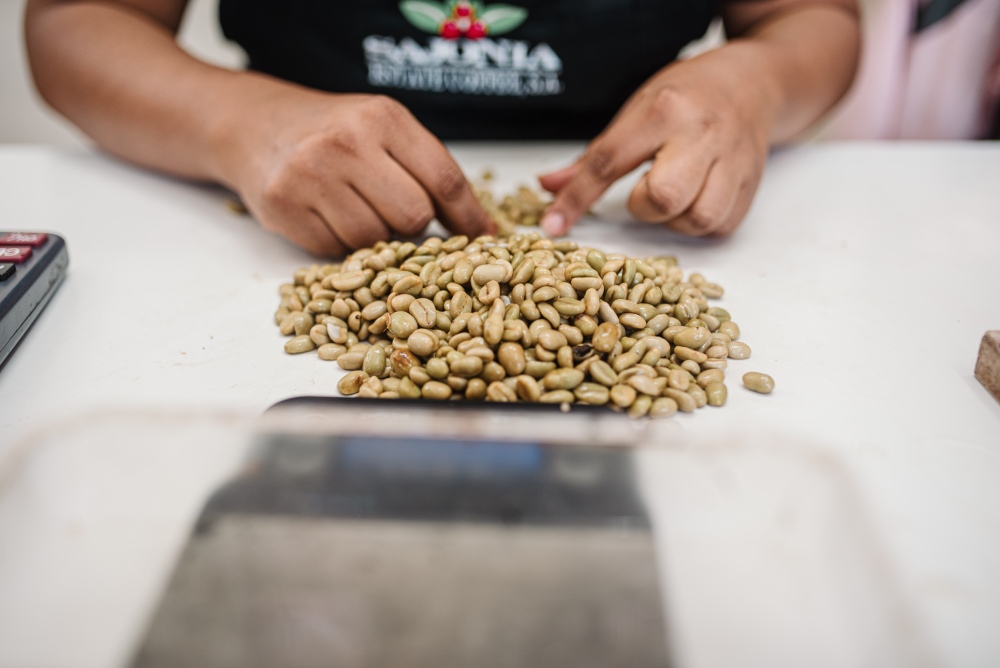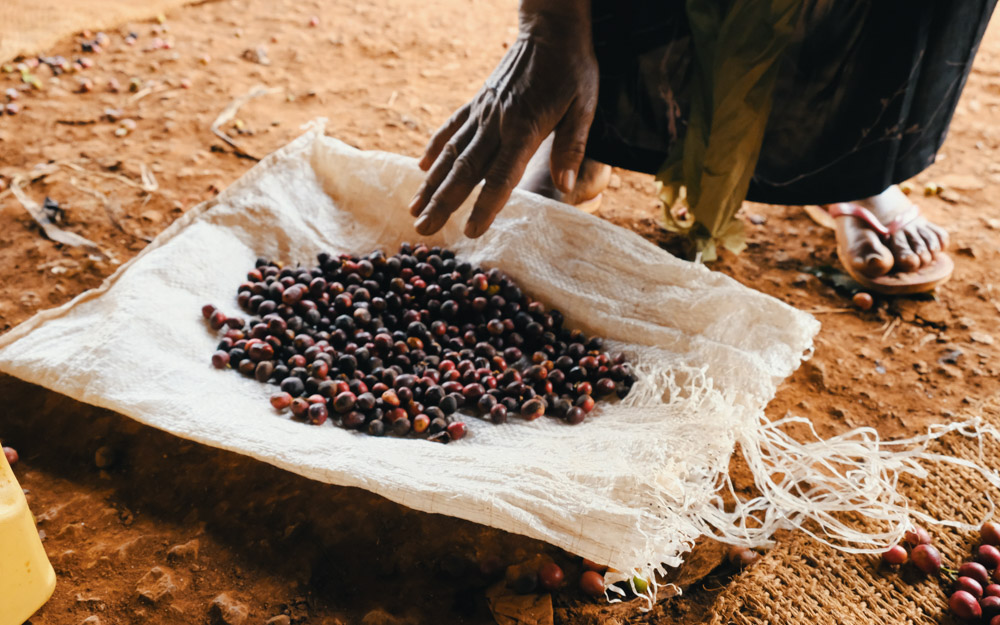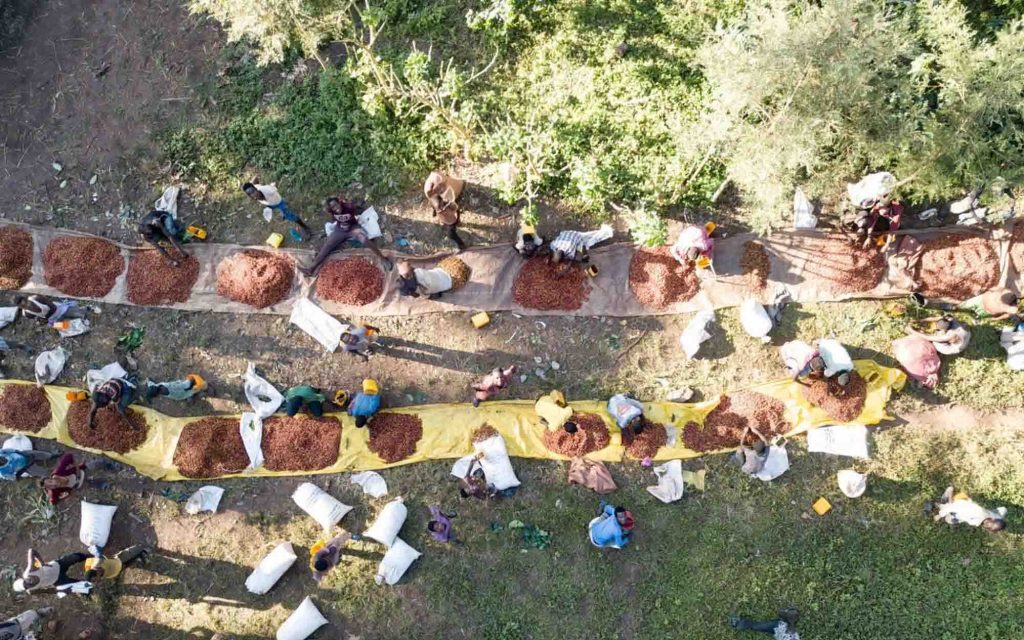Changing how we assess coffee quality can help both producers and roasters

Assessing coffee quality is an absolutely essential step in the supply chain. Without standardised measures of grading and scoring coffee, industry professionals would struggle to communicate key information – and producers may not receive fair prices for their hard work.
For decades now, the Specialty Coffee Association’s 100-point scoring system has been the most commonly used method to evaluate coffee’s sensory characteristics and overall quality. The SCA’s protocol serves an important purpose, creating a universal methodology and shared language for coffee professionals to objectively evaluate quality.
There is still space, however, to explore alternative options. A growing number of companies and organisations in producing countries are seeking to develop their own systems that can help producers retain more value. And as a result of better transparency, roasters can benefit, too.
To find out more, I spoke to Eduardo Arguello, general manager and CEO of NicaVio, Manfred Guenkel, general manager and CEO of Sajonia Estate Coffee, and Edgar Arguello, a producer at Finca El Socorro.
You may also like our article on whether the new SCA cupping form and protocol will add value to specialty coffee.
How is coffee quality scored and evaluated?
The coffee industry is, of course, global. This means creating a universal system to assess quality that can be understood by coffee professionals the world over is incredibly important.
So far, the answer has been the SCA 100-point scale. The Specialty Coffee Association first introduced its cupping and grading protocols in 1999 to not only distinguish between specialty and commodity-grade coffees, but to also establish a standardised system that can theoretically analyse coffee quality as objectively as possible.
In 2004, the SCA refined these protocols to create its own scoring system, which was inspired by the wine industry’s 100-point scale. Scores range from 0 to 100, with a higher score indicating better quality – and a score of 80 or above certifying that the coffee is specialty grade.
To carry out these assessments, trained Q graders cup coffees and assign scores based on attributes like aroma, body, acidity, sweetness, and balance. Each category can account for up to ten points of the coffee’s final score.
Across the industry, cup scores are used to communicate a coffee’s overall quality, which can naturally have a big impact on the price that farmers receive.
But how do producers score their coffees?
The SCA’s 100-point scale is certainly used by industry professionals in producing countries, and can be a helpful tool for many. But coffee farmers also have their own ways of assessing coffee quality that the wider industry should consider, too.
Eduardo Arguello is the general manager and CEO of NicaVio, a family-owned green and roasted coffee supplier in Central America – with a specific focus on supporting producers in Nicaragua.
“Traditionally, in Nicaragua specifically, farmers would assess their coffee based on the number of physical defects, aroma, and the level of fermentation,” he explains. “The coffee would then be graded, and producers would be paid according to the C price.”
For the last century, once they handed their coffee over to mills, most producers in Nicaragua and other Central American countries knew little about who bought their coffee and what cup score it had received. Naturally, this lack of transparency causes a number of problems, including lower prices paid to farmers.
Addressing issues at farm level
Manfred Guenkel is the general manager and CEO of Sajonia Estate Coffee in Matagalpa, Nicaragua. He tells me that Sajonia Estate Coffee developed its own traceability system around six years ago, which allows producers to track their coffees after delivery and understand more about the quality of their lots.
“We add a detailed report about each lot that comes into our dry mill to our database system,” he explains. “The producer can see both the SCA cupping score and the sensory attributes of their coffees.”
Additionally, Manfred says that Sajonia Estate’s quality control team also conducts cuppings onsite, and informs producers of any defects and overfermented flavours upon receiving the coffee.
Eduardo says that having this information to hand is absolutely critical for producers. “Sajonia Estate Coffee and NicaVio are working together to better inform coffee farmers,” he adds.
Edgar Arguello is a producer at Finca El Socorro in Nicaragua. He agrees with Eduardo, and says understanding cup scores and quality is more important than ever for producers.
“Buyers are starting to ask for more information about flavour profiles and quality because they want the best for their customers,” he says. “Whenever I export my coffees to a buyer in the US, I work with Sajonia Estate and they cup samples for me.
“They provide me with all the necessary information right away, so I can then use it to make improvements in my farming practices,” he adds.
The pros – and cons – of standardised quality assessment
For decades, the SCA 100-point scale has remained the industry standard for evaluating coffee quality – and for good reason. Designed to be as objective as possible, the system aims to reduce cupping bias and provide a fair assessment of quality and sensory profile.
Essentially, this means cupping scores aren’t random, but based on strict and standardised processes and protocols, which in theory should improve consistency and accuracy when assessing coffee quality.
Moreover, a common understanding of how we score coffee should help supply chain actors make more informed decisions, and ensure industry professionals around the world are on the same page.
But despite its widespread use in the industry, the SCA’s cupping protocols have faced some criticism in recent years.
Wider debate about whether reducing coffee quality to a single score is relevant and fair has been ongoing, while some argue that “intersubjectivity” (i.e. the cupper’s personal opinion) can still skew scores in either direction. This variability can ultimately result in inequitable compensation for producers.
Eduardo has noticed a shift in attitudes towards cupping scores, telling me: “For most roasters I sell to, it’s a formality. They are more interested in flavour notes and the levels of acidity and sweetness.”
Standardised protocols can also fail to acknowledge cultural factors that influence different taste preferences – preventing the industry from celebrating and rewarding flavour diversity more widely. These issues are largely linked to the Coffee Taster’s Flavor Wheel, which is used by many industry professionals to identify tasting notes.
While there’s no denying its resourcefulness, the Wheel includes flavours more commonly found in North American and Western European cuisines. Understandably, this inclusivity can make it challenging for coffee professionals outside of these regions to identify and relate with the flavours they taste.
Looking at new ways to score coffee
In response to ongoing scrutiny, the SCA launched its new Coffee Value Assessment in April 2023. The association said its updated cupping guidelines and protocol will allow coffee professionals to collect more information about a specific coffee, and thereby evaluate quality more comprehensively and fairly.
Other companies have also sought out to create their own quality assessment systems to add more value to coffee. NicaVio and Sajonia Estate Coffee developed the Golden Attribute Competition, which departs from conventional scoring protocol. The first edition of the competition took place in March 2024 in Nicaragua.
Eduardo explains that while the Golden Attribute Competition uses the SCA cupping procedure, the score sheet includes an additional field which assesses ten different key flavour attributes:
Floral
Fruity
Caramel
Chocolate
Citrus fruits
Funky
Lactic (including mouthfeel)
Alcoholic (or “boozy”)
Nuts
Herbal
Spices
“Jacinto, one of our Q graders, worked with five other local Q graders to develop our new form,” Eduardo explains – adding that over 100 samples were submitted for the first competition, representing a wide range of processing methods and flavour profiles.
“We calculated an average score for all competitors, which we used to determine the winners of the inaugural Golden Attribute competition,” he continues.
He adds that the winners will be celebrated and acknowledged at NicaVio’s booth at the 2024 Specialty Coffee Expo in Chicago, which will be held from 12 to 14 April – with attendees able to taste the highest-scoring coffees.
Retaining more value for producers
There are many benefits to understanding how we can define coffee quality in different ways, but arguably the most important is supporting producers to understand more about their coffee and how they can improve quality.
Eduardo says new systems like the Golden Attribute Competition can help to reassure producers of their coffee’s unique characteristics, while also providing constructive advice if necessary.
“For instance, if there is insect damage to the beans, we’ll give producers actionable feedback,” he tells me. “Farrmers can receive more insight on the quality and the physical characteristics of their coffee.
“We’re proud that we’re giving producers a new way to evaluate their coffees,” he adds.
Two-way communication can also help producers successfully implement different harvesting and processing practices to improve coffee quality, and potentially increase prices, too.
“Coffee farmers can analyse the information provided and make their own decisions,” Manfred explains. “And having access to that information also helps them to negotiate the best price because they know which coffees have higher cupping scores or which have the most desirable sensory and flavour attributes.”
How can roasters also benefit?
In an increasingly competitive market, roasters need to stand out – and flavour notes can be a useful marketing tool.
Manfred tells me he has noticed a growing number of roasters looking to buy coffee with specific sensory characteristics. For example, he says a buyer might request a lot which has more floral and fruity attributes.
“Seeing this trend, we decided to improve our quality assessment system so that we can include the key attributes of a coffee as part of our offerings,” he says. This means roasters and traders can find the coffees they’re looking for more efficiently and accurately, helping to simplify the buying process.
Communication with the end consumer can also become easier, as many customers base their purchasing decisions on which flavour notes they enjoy the most.
Better transparency
Additionally, consumers increasingly want to know the story behind the coffee they’re drinking, so transparency and traceability are also key. NicaVio’s direct trade system can provide roasters with information about the producer and farm to share with their customers.
“Honesty and transparency are a big part of buying specialty coffee,” Edgar says. “People want to know who is growing the coffee, what the farms are doing, and how producers are minimising their environmental impact.”
Standardised systems of assessing coffee quality hold a lot of value in the industry. But reimagining how we can evaluate quality – especially in ways that producers can benefit – is equally as important.
At the same time, it’s also essential that roasters can reap the rewards from these new protocols, so that the coffee industry as a whole can evolve even further.
Enjoyed this? Then read our article on what cupping can tell producers about their coffee.
Photo credits: NicaVio
Perfect Daily Grind
Please note: NicaVio is a sponsor of Perfect Daily Grind.
Want to read more articles like this? Sign up for our newsletter!
The post Changing how we assess coffee quality can help both producers and roasters appeared first on Perfect Daily Grind.





Responses